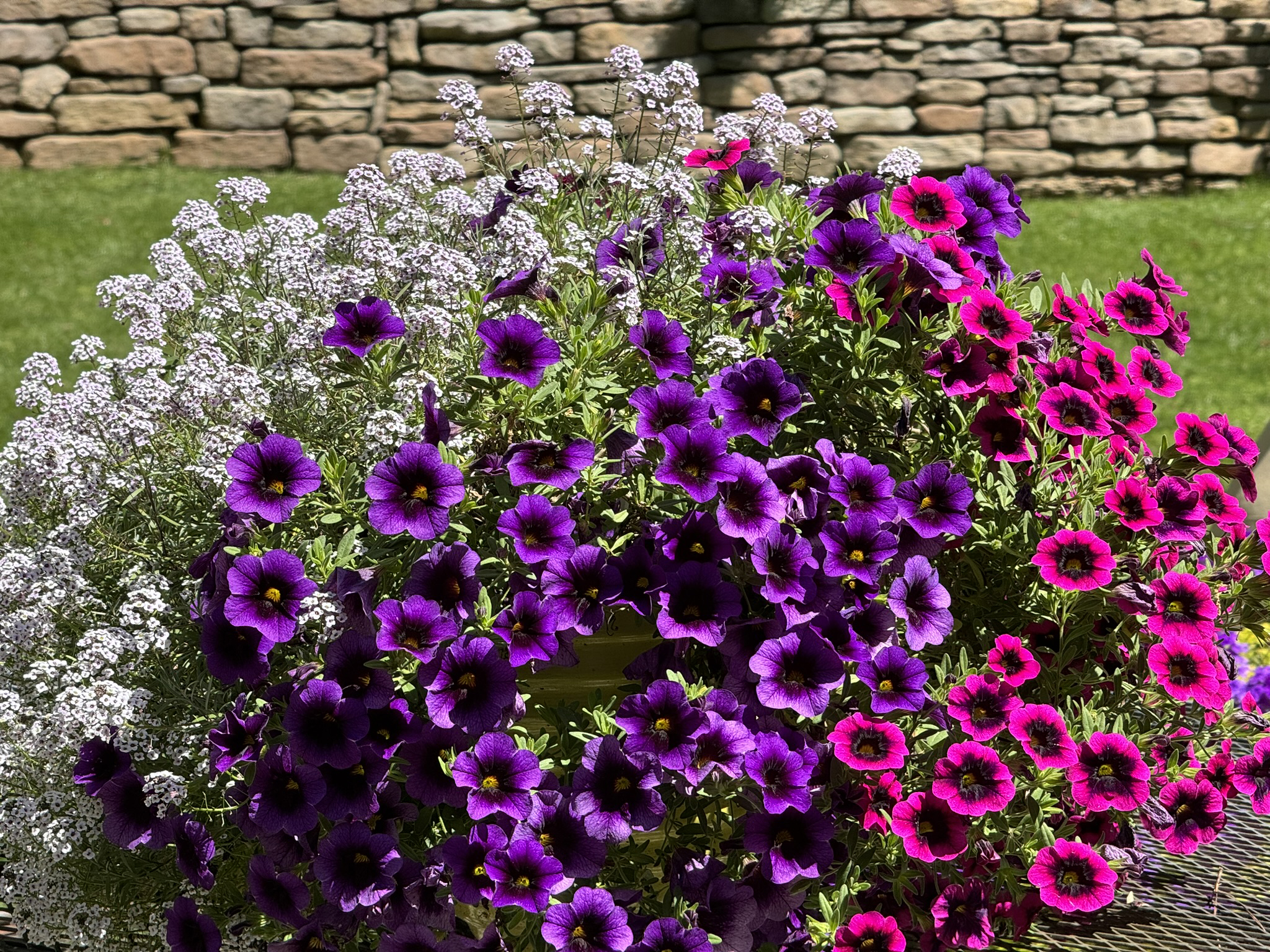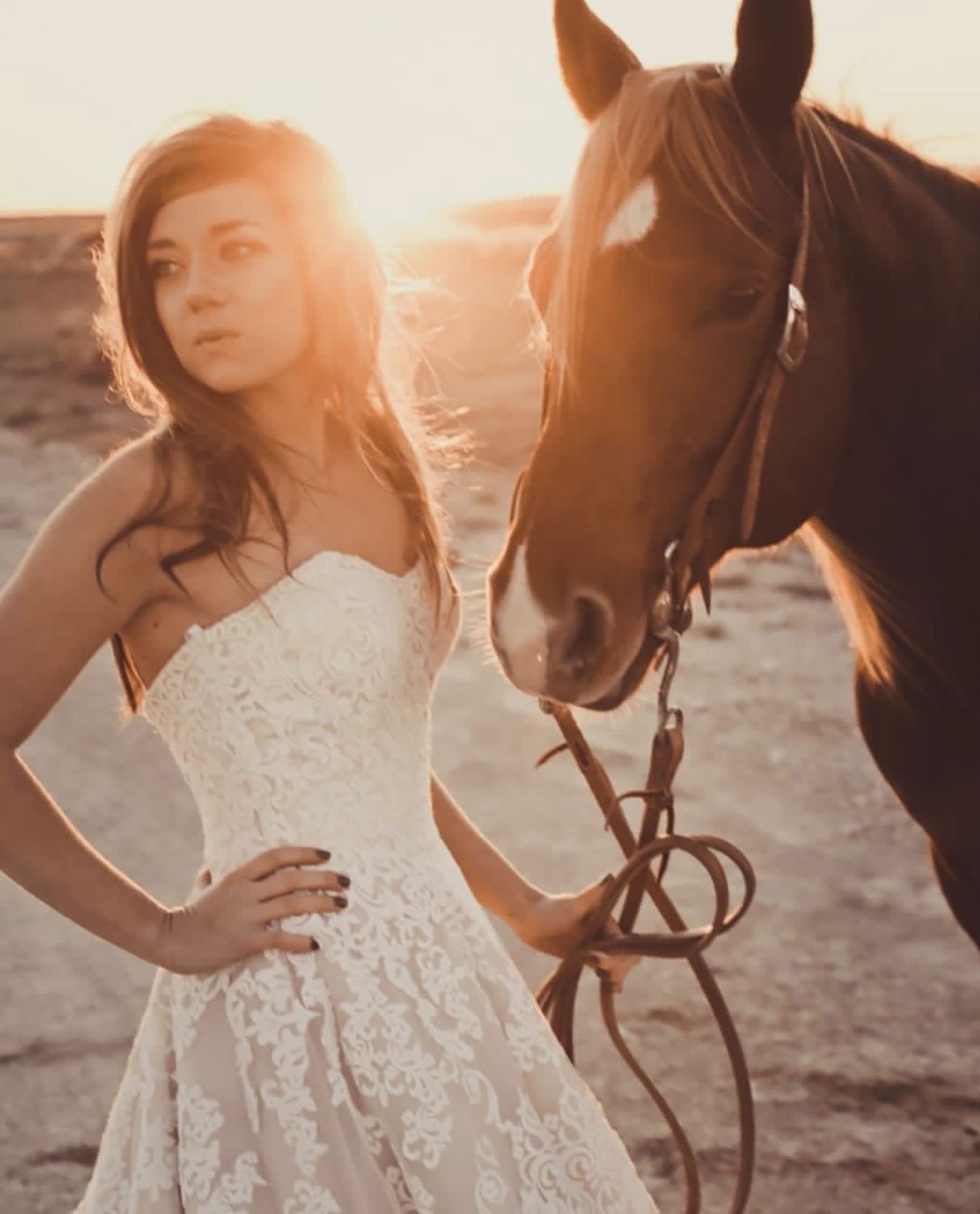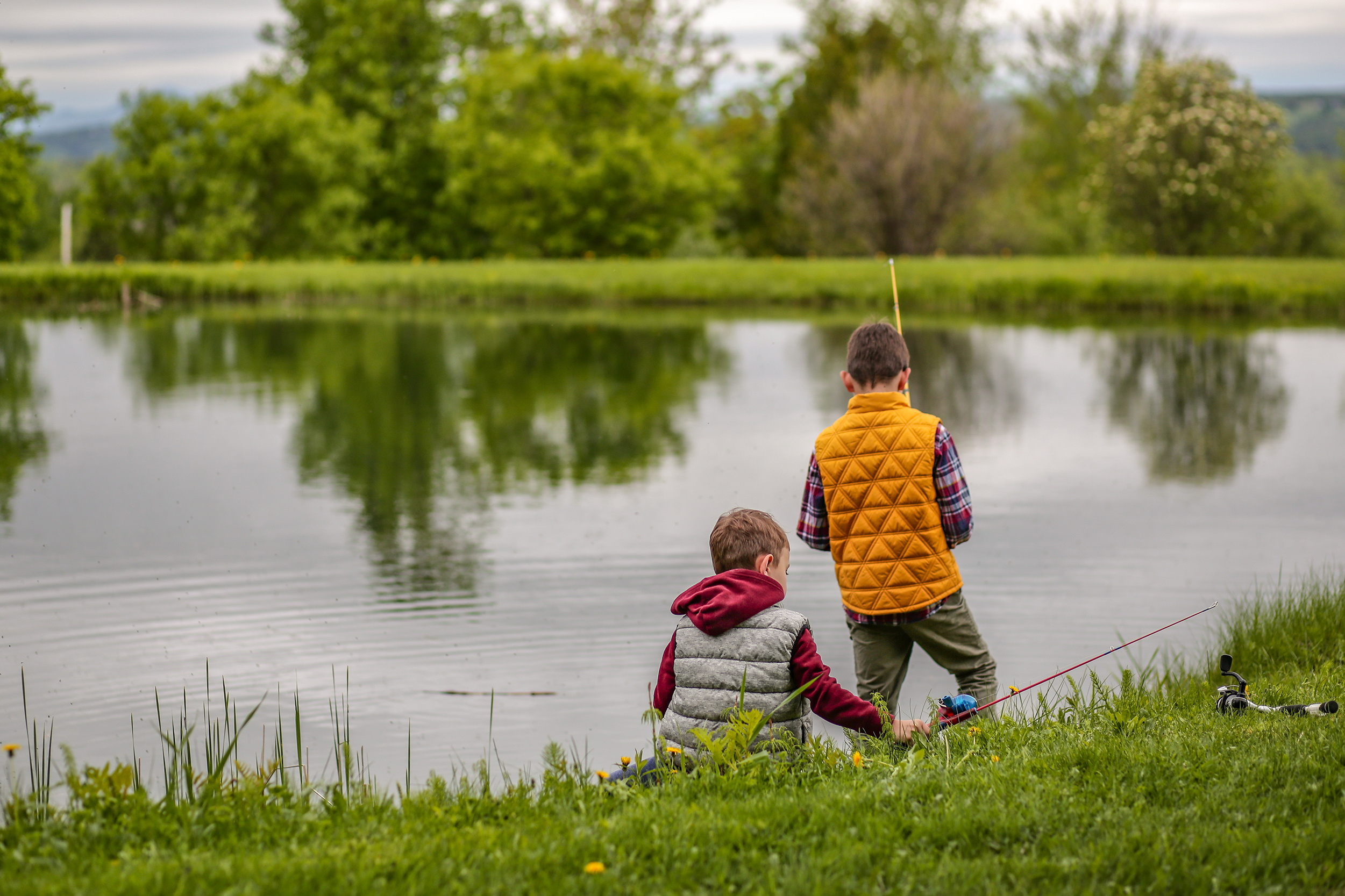Country Lifestyle
To Everything There is a Season
I love how Oklahoma definitely has all four seasons. Sometimes it may not seem like much of a break in between season’s. The weather can be blustery one winter day and the very next day it’s eighty degrees and we are wearing shorts, wondering how we skipped past Spring. Hang on, because lo and behold, the next day we wake up to the sound of Spring showers!
Spring is refreshing. Time to open up those windows and let the house breathe a little. Spring also represents fresh starts, new life. Spring to our soul, is the season of our youth. We celebrate our little sprouts and they quickly start growing like weeds. Full of energy and reckless abandon. This is the time when we instill firm foundations, so their little roots can grow deep and strong. If cultivated and fed properly, these baby birds will be happy and healthy when they leave the nest.
Remember the little rhyme we chanted on the last day of school, “No more pencils, no more books, no more teacher’s dirty looks. school is over, school is done, no more learning, lets have some fun.” Everyone looked forward to Summer. Summer is the time for enjoyment, rest and to just simply be in the moment. Summer to the soul means you have arrived; Adulthood. Adulthood where, more than likely, most have chosen a career and are married with children. You are in the prime of your life, you can get up from a chair without making a noise, creaking or groaning. Summer isn’t hurried or worried. The summer season is fun and not heavy. If you fall you have time to get back up. If you’ve made some bad decisions, some financial mishaps, married the wrong soul mate, or can’t seem to move from your mother’s basement, if you have steered your ship in the wrong direction, do not fret, it’s still summer and you have time to turn around, get back on course or choose a new one.
When you have children, you relish the time when school starts back up in the fall, if only for the mere fact that routines get established and lives get organized. Fall to our soul is as much of the same thing. We know what we like, we have our routines, our life is organized just the way we like it. There is so much beauty in the Fall, the air is crisp, and refreshing. If you are a football fan, you have been waiting with anticipation all year, for kick off. That’s the same feeling we have when we finally reach the Fall stage of life. If you have planned well then the saying “Autumn carries more gold in its pockets than any other season.” has two meanings. In this season of life most generally we are setting our minds on retiring. Readying ourselves to reap everything we’ve been sowing. We’ve given our children roots to grow and wings to fly. The nest is empty. You can walk around your house naked. This is also the time to check your storehouses and make ready for the winter. Fall is my favorite season, what’s not to love, sweaters, scarves, jackets, boots, apple cider, comfort food, cool breezes and bonfires. A time when we slow down and relish the beauty in the landscape. Not only do the leaves change colors but more than likely so does our hair.
In the fall stage of life you reminisce about the good old days of summer, but not near as much as you do when you reach the winter season of life. If you spend your time harvesting wisely during the fall, then winter will not be a bitter cold season. Winter is the time we usually retreat indoors and aren’t as active as the seasons in the past. Winter of the soul is a time for us to extend grace to our families. Winter wraps up the calendar year, it’s also the last of our season’s of life. Winter holds my favorite holiday; Christmas. A time when my family comes together, in one place. The festivities of the holidays build all month long. Christmas dinner has been lovingly prepared, eaten and all the dishes are washed and put away, gifts have been opened and the wrappings in the trash. Any time all my family is sleeping under one roof, is when I sleep the best. Everyone is home safe and sound. Christmas night, it seems everyone sleeps in peace. That’s how I hope that it will be when my winter is over, resting in peace.
I would say the season I’m currently in is late fall. I’m slowing down. I’m reminiscing more. I’m about halfway through, scrapbooking my life. I’m trying to do a little everyday so I can finish up before I start forgetting where we were and what we were doing. This is a very relaxing part of my season. I don’t put as much pressure on myself as I used to. Somedays I just curl up in my chair and read.
I rejoice in the fact that I’ve loaded my last load of cows. It takes way too long for my body to recoup after a day of working cows. I have said this before but, this time I mean it. So when my Redneck Romeo gets around to reading this article, he will see it in writing and ya’ll are all my witnesses. I’m a retired ranch hand, from here on out.
One big thing I’ve noticed, in this season of my life is my calendar is pretty empty looking, except for doctors appointments and mani/pedi appointments. So I guess it looks like I’m retired. With new ailments you have new doctor’s appointments. A line on the paperwork that really stood out to me recently was where it asks for your occupation. I studied this for a moment, and wrote the words “retired.” In my summer season, I wrote “housewife” where it asked for my occupation. After many years of marriage and three children in their late teens, I changed my occupation to “Domestic Goddess” which usually brought a laugh and a little conversation. I thought that would make me stand out, you know, be remembered easily. Now that my kids are all grown with children and lives of their own, I felt it would be legitimate, in my fall season to write “retired” the next time I came across this question.
At the hospital for a stress test, the paperwork was placed in front of me, I breezed right through it, and proudly wrote “retired” on the correct line. While on the treadmill, the nurse asked me questions, which is about the equivalent as the dentist expecting you to answer a question with his hands in your mouth. The treadmill had just elevated in the front and increased its speed. I’m doing my best to keep up the pace and breathe, when she decides to chit chat, “Your paperwork says you’re retired, where did you retire from?” The whole time we’ve been chit chatting I’ve been giving one word answers, now I realized I would have to squeeze out five words, “I was a Domestic Goddess” and I tried my best to look her way with a smile. This is where things got a little fuzzy, the next thing I remember is laying on the gurney with oxygen in my nose, and the ladies smiling down at me. As if nothing had happened, I immediately explained, “I started out as a housewife, was promoted to Domestic Goddess, and now I’ve reached the age of “retired.” Yes, I did make the little quotations with my fingers when I said the words “retired.” I felt an awkward silence except for my heart beating in my ears, from now on, I’m just going to claim my occupation as “Old but Gold”
Life’s seasons are full of mountain top highs and valley lows. We often hear “Life is short… better enjoy it!” But don’t miss this, “Eternity is long… better prepare for it!”
We all make mistakes, and no one is perfect. “Bloom where you’re planted” is great advice but, sometimes flowers that need full sun get planted in the shade, no matter how much they want to thrive it just won’t happen. Be courageous and make changes! For me, I have found that living at the end of this dirt road is where I bloom the best, in the peace and quiet, where the cows outnumber the people. I pray each of you bloom during each season of your life. Wherever you find yourself at this moment, take time to drink it in and savor the moment.
Country Lifestyle
Superbells Blackcurrant Punch

Rare Color for Baskets and Mixed Containers
By Norman Winter | Horticulturist Author and Speaker
The Garden Guy has become completely mesmerized by a bowl of blackcurrants. You can guess I am having a little fun with you. I am not talking about the fruit but the flowers referred to as Superbells Blackcurrant Punch.
This year most everything came through the winter including a few plants I am even asking where did you come from? The spring has been long, gloriously beautiful and still in progress and all of the Superbells calibrachoas taking your breath away with their beauty.
I have written about the ‘Punch Group’ but never about a single color. I love every one of them but this year I just have to dedicate a column to Superbells Blackcurrant Punch. Yes, I do have a couple of yellow bowls where they are showing out but in reality, they are mixed in a lot of my containers.
Superbells Blackcurrant Punch has won a ‘baker’s dozen’ of awards, Top Performers, and Perfect Scores north to south and east to west. Like the others they reach about 12-inches tall with up to a 2-foot spread. They obviously have some cold tolerance as mine have come through the winter. The caveat is they did spend five consecutive nights in the garage. Their beauty in March and April has defied logic.
The color which is so rare in the garden makes it a must have plant. I found a Proven Winners description from several years ago that nails it, Superbells Blackcurrant Punch has bright fuchsia-colored petals with velvety black centers and a subtle yellow in the throat. It will be hard to pass by if you are lucky enough to find them at the garden center.
Your success will come from growing them in containers with a very good potting soil. Give them plenty of sun. There is a lot of garden gossip that says you can’t grow them with Supertunias, Superbenas or a plethora of other plants because of different water requirements.
In the South we water containers and baskets every day unless we get rain. These containers drain freely so life is the same for all the plants. Since we water so frequently, we need to feed on a regular basis. The Garden Guy mixes up the blue water-soluble mix and feeds the container grown plants about every three weeks. At some point the Superbells Blackcurrant Punch will look tired and in need of a trim. This haircut so to speak will generate new growth, and blooms for the fall.
Your choice of partners is only limited by your imagination. I love them with Lemon Coral sedum, Superbena Cobalt verbena, Blush Princess sweet alyssum and mixed with other calibrachoas like Superbells Grape Punch and Magic Pink Lemonade. They are heavenly with Primo Wild Rose heuchera and Superbena Whiteout verbena.
All of the Superbells attract both hummingbirds and butterflies. The butterflies I have photographed so far have all been Eastern Tiger Swallowtails. You have to admit that’s not bad for flowers that are so pretty. Planting season is here, keep a spot open in your mixed-container recipes for Superbells Black Currant Punch or some of the other Superbells calibrachoas that now total 41. Follow me on Facebook @NormanWinterTheGardenGuy for more photos and garden inspiration.
Country Lifestyle
Western Housewives – June 2024

Life consists of small events that define us. Sometimes, it’s something as simple as eating cake with your two-year-old at midnight at your sister’s wedding. Sometimes, it’s something as painful as taking your two-week-old to the emergency room with RSV and living there for a week. Both are moments that changed me, and both are moments that I’ll remember forever.
Often my defining moments have happened on the back of a horse. I guess that is because that is where I have spent most of my life. It has made me pay special attention to each horse I have ridden during different stages of my life.
My first horse was a big bay horse that was must have reminded me of Greek mythology because it took me about two seconds to name him “Hercules.” He was the perfect mount for a five-year-old that acted tough but was secretly scared of her own shadow. Once I got Hercules, I could start going to work with my dad. We gathered wheat pastures and road pens, and he let me sit in the round pen on Hercules while he worked his sale horses. At the ripe age of five I was a pretty seasoned pen rider and had the sour disposition to prove it.
One morning we had a lot of wheat pasture freshies to turn out. Naturally, they ran off as soon as they got off the truck. Babies cry, and wheat pasture cattle run off the truck; I don’t make the rules.
My Dad had to leave me and get in front of the herd to keep them from crashing into the fence. I’m sure he told me just to stay put, but Hercules got excited by all the commotion and started following the impending stampede. Now I realize that I was safe the entire time, but, at that moment, I was certain my life was over. I was dramatic even as a youngster. Would Hercules ever stop? Would he try and jump the sprinkler tracks? What if he runs through the hot wire? And most importantly, what will I tell my friends?
About the time I was ready to jump into the dirt my Dad ran up beside me and helped me stop Hercules. I was safe, my adrenaline was pumping and I was promised an Allsup’s Coke for all my troubles. That was a defining moment in my life. I realized the more danger you got yourself in to, the much bigger the condolence award. As long as I was able to keep it to an Allsup’s Coke level of danger I would be just fine.
The next horse I truly loved was named “Alotofbull” He was anything but full of bull. He was big, cowy, and athletic. He scared me just a little but that’s what made me love him the most. My Dad and I won countless events on Alotofbull. My Dad has true horsemanship pumping through his veins, but I can only credit my riding success to Alotofbull. He made things easy for me and I felt I was nothing without him.
Even after all the ribbons, the moment I remember the most about him wasn’t in the showpen. it was in the middle of nowhere on a place we called “The Cain.” The Cain was where I spent many fall afternoons and summer mornings. It was full of Sandhills, cactus that were found of my backside every time my seat left the saddle, and absolutely no sign of civilization. We would push cows to water, move pastures, and do other slow-paced things that were good for the horse and for the mind. I loved it there.
One afternoon in the middle of June, my Dad and I were moving some cattle to water. After we were done we came upon a set of old pens that my Dad had branded calves in with his Dad a long time ago. My Dad got quiet and solemn. Traits that were unusual for him. He started to reminisce of times long ago and told me how much he wished all his kids had gotten to know his Dad before he had passed away many years prior. I was only 14 at the time, and I was having trouble holding back tears myself. I leaned forward and played with Alotofbull’s black mane. I knew my grandfather had been a special man and I knew my Dad had cherished him. It made me see my Dad in a different light going forward. Yes, he was strong and resilient, but he was also human, just like the rest of us. He had a vulnerability in his life, too. It was a moment that taught me not to be afraid to talk about the hard stuff but to always press on. No matter what.
Many years later, I found myself in beautiful Oklahoma on a horse named “Reuben.” He was my then-boyfriend’s horse and was the only quick and little horse I had ever ridden. He was spunky and made me feel like better help than I was as we gathered pairs to wean that morning.
The sun was just coming up over the cottonwood trees, making the dewy grass shine. I looked over at the man beside me and just knew I would spend the rest of my life doing this very thing with him. I didn’t care if we ever had money or much of anything, really. As long as we were together, loving God, and riding good horses, I didn’t care about anything else.
About 12 hours later, after a long day and a few incidents that may or may not have involved me getting run over by a yearling, that same man proposed to me. We had never talked about it out loud, but I guess God had put it in both of our hearts. It was a moment that, of course, changed the rest of my life. It taught me not to overthink things when they are right and that an Oklahoma cowboy was just what my life needed.
I’ve had many horses and many defining moments in my life. Sometimes, I have loved the horse, and sometimes, I have not. The same goes for the moments. Nevertheless, each horse and moment has taught me something. After all this time, I am convinced that no matter how old I get, I will never be too old to ride a good horse because I will never be too old for a defining moment.
That being said, if one or two of my life lessons could involve another Allsup’s Coke, that’d be all right by me.
Country Lifestyle
A Beginners Guide to Fishing

It seems that the subjects of countless profiles in the past year have mentioned, whether in passing or as part of a larger discussion, that the COVID-19 pandemic changed Oklahoma’s landscape in numerous ways. By and large, the overwhelming observation is that Okies in urban areas have begun migrating to the country, and are embracing the rural lifestyle. Small farms are popping up with a variety of animals, and gardens are being planted where there wasn’t one before.
It made me think that there are likely people out there who don’t know the basics of one of Oklahoma’s favorite pastimes: fishing.
With countless lakes, rivers, and streams teeming with a diverse array of fish species, Oklahoma offers ample opportunities for anglers of all ages and skill levels to cast their lines and reel in memorable catches.
If you’re new to fishing and eager to dip your toes into the water, don’t be afraid. Here are a few basic concepts to get you started.
Understanding Oklahoma’s Fishing Scene
Before you embark on your angling adventure, it’s essential to familiarize yourself with Oklahoma’s diverse fishing opportunities. From largemouth bass in the renowned Lake Texoma to catfish in the Red River, each region of the state offers its own distinct fishing experience. Consult resources such as the Oklahoma Department of Wildlife Conservation website and local fishing guides to discover prime fishing spots near you and learn about the regulations and licensing requirements specific to Oklahoma waters.
Gear Up
One of the first steps in getting started with fishing is acquiring the necessary gear. For beginners, a basic fishing rod and reel combo will suffice. Opt for a versatile spinning or spincast reel paired with a medium-action rod, which offers flexibility and ease of use for a variety of fishing techniques. Additionally, invest in essential tackle such as hooks, sinkers, bobbers, and a selection of artificial lures or live bait, depending on your preferred fishing style and target species.
Learn the Ropes
Before you hit the water, take some time to familiarize yourself with the fundamentals of fishing. Practice tying basic fishing knots, which are essential for securing your line and attaching hooks and lures. Watch online tutorials or consult instructional books and videos tailored to beginner anglers to learn casting techniques, proper rod handling, and best fish handling practices.
Choose Your Fishing Spot
Oklahoma boasts an abundance of fishing hotspots, ranging from expansive reservoirs and scenic rivers to hidden ponds and urban lakes. Consider factors such as proximity, accessibility, and the type of fish you’re targeting when selecting your fishing spot. Popular destinations for beginners include Lake Hefner in Oklahoma City, Lake Thunderbird near Norman, and the Illinois River in northeastern Oklahoma, known for its scenic beauty and excellent trout fishing.
There are also countless farm ponds, but, I hope it goes without saying, you must obtain the land-owner’s permission to access their lands and fish their ponds.
Follow Fishing Regulations
Before you embark on your fishing excursion, familiarize yourself with Oklahoma’s fishing regulations and licensing requirements. The ODWC website provides up-to-date information on fishing seasons, bag limits, size restrictions, and license fees. Remember to obtain a valid fishing license and any additional permits required for specific fishing locations or species, as failure to comply with regulations can result in fines and penalties.
Practice Patience and Persistence
Fishing is as much about patience and persistence as it is about skill and technique. Be prepared to spend time waiting for the fish to bite, and don’t get discouraged if you don’t reel in a trophy catch on your first outing. Experiment with different baits, lures, and fishing techniques, and don’t be afraid to seek advice from experienced anglers or local bait shops. You’ll soon become more proficient and confident in your fishing abilities with practice and perseverance.
By gearing up with the right equipment, learning essential fishing skills, choosing the perfect fishing spot, following regulations, and embracing patience and persistence, beginners can set themselves up for a rewarding and enjoyable fishing experience in the Sooner State.
References:
Oklahoma Department of Wildlife Conservation (ODWC). “Fishing Regulations.” wildlife.ok.gov/fishing/regulations
ODWC. “Fishing in Oklahoma.” wildlife.ok.gov/fishing
-

 Country Lifestyle7 years ago
Country Lifestyle7 years agoJuly 2017 Profile: J.W. Hart
-

 Outdoors6 years ago
Outdoors6 years agoGrazing Oklahoma: Honey Locust
-

 Country Lifestyle3 years ago
Country Lifestyle3 years agoThe Two Sides of Colten Jesse
-

 Outdoors4 years ago
Outdoors4 years agoPecan Production Information: Online Resources for Growers
-

 Equine7 years ago
Equine7 years agoUmbilical Hernia
-

 Attractions7 years ago
Attractions7 years ago48 Hours in Atoka Remembered
-

 Farm & Ranch6 years ago
Farm & Ranch6 years agoHackberry (Celtis spp.)
-

 Outdoors3 years ago
Outdoors3 years agoSuzy Landess: Conservation carries history into the future





